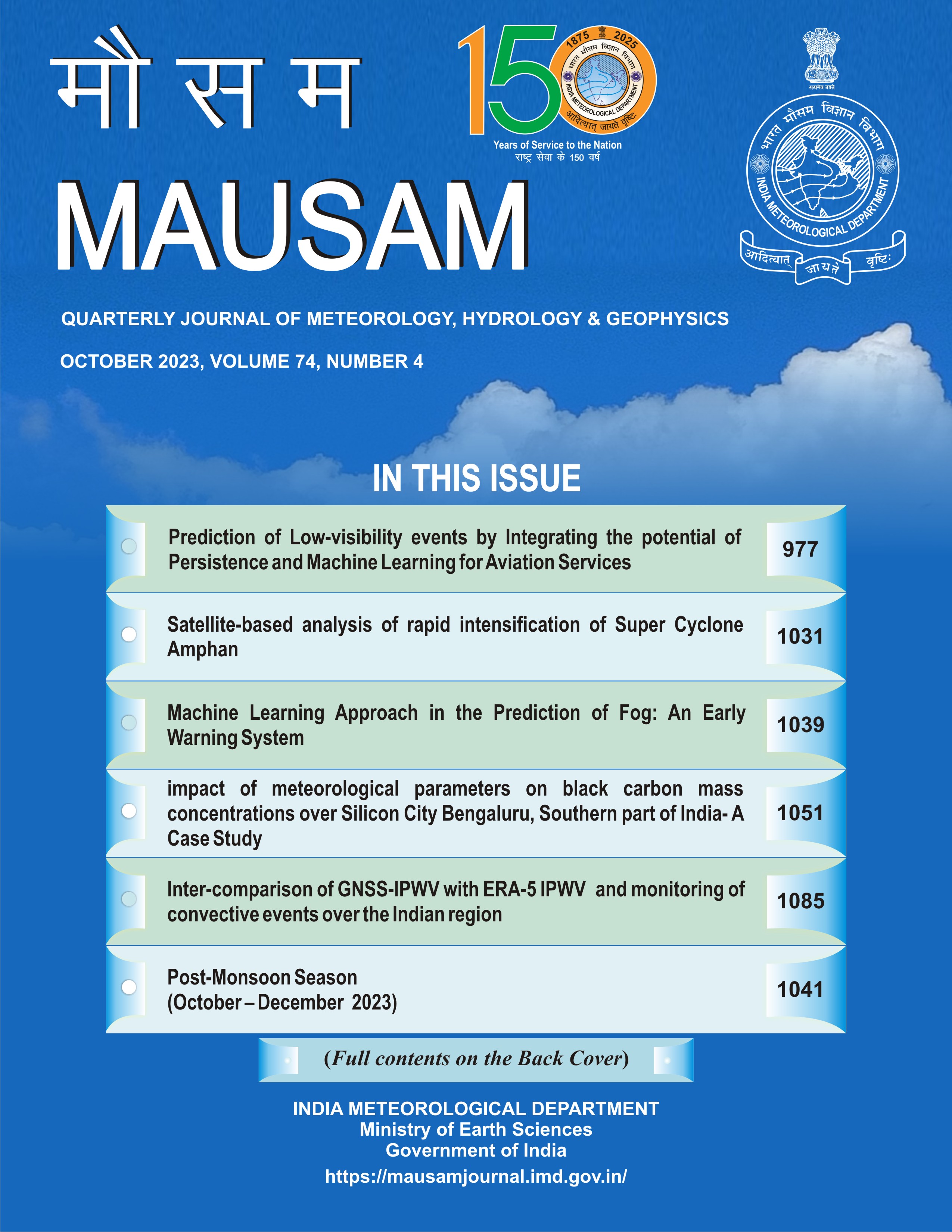Machine Learning approach in the prediction of Fog: An Early Warning System.
DOI:
https://doi.org/10.54302/mausam.v75i4.5919Abstract
The aviation sector is extremely vulnerable to fog. Thus, accurate fog predictions are essential for
aviation sector efficiency, particularly airport management and flight scheduling. Even with numerical weather prediction
models and guiding systems, fog prediction is challenging. The difficulty of fog prediction is due to the inability to grasp
the micro-scale factors that cause fog to form, intensify, augment and dissipate in the boundary layer. This study looks at
how well machine learning (ML) tools can predict fog (Visibility <1000 m) and dense fog (Visibility <200 m) at India's
Jay Prakash Narayan International Airport (ICAO Index-VEPT), a representative station of the Indo-Gangetic Plains
(IGP). The proposed ensemble ML-based model was trained using hourly synoptic data from 2014 to 2020 and tested
using data from 2021 to 2022 (December to February). Once the features are chosen and the forecasters' local knowledge
is taken into account, the dry bulb temperature (°C), dew point temperature (°C), relative humidity (%), cloud amount
(octa), wind direction (degrees from true north) and wind speed (knots) are used to build the proposed ML models. ML
algorithms were trained on meteorological data from 1500 to 2200 UTC to predict fog (Visibility <1000 m) and dense
fog (Visibility <200 m) for the next day at 0000 UTC, with a two-hour lead time. For fog forecasting at 0000 UTC with a 4-hour lead time, ML models were trained with data from 1300 to 2000 UTC and so on. This study evaluates parameter tuning in six level 0 ML models: distributed random forest (DFR), deep learning (DL), gradient boosting machine (GBM), generalized linear model (GLM), extremely randomized tree (XRT), XG Boost and stacked ensemble at level 1. The performance metrics and statistical skill scores indicate that DRF and DL models perform well for lead times of 2 and 4 hours at level 0 for fog (visibility <1000 m) and dense fog (visibility <200 m). But the proposed ensemble models outperform all the base models at level 0 and are recognized as the best instrument for predicting fog at Patna Airport.
Downloads
Published
How to Cite
Issue
Section
License
Copyright (c) 2024 MAUSAM

This work is licensed under a Creative Commons Attribution-NonCommercial 4.0 International License.
All articles published by MAUSAM are licensed under the Creative Commons Attribution 4.0 International License. This permits anyone.
Anyone is free:
- To Share - to copy, distribute and transmit the work
- To Remix - to adapt the work.
Under the following conditions:
- Share - copy and redistribute the material in any medium or format
- Adapt - remix, transform, and build upon the material for any purpose, even
commercially.



